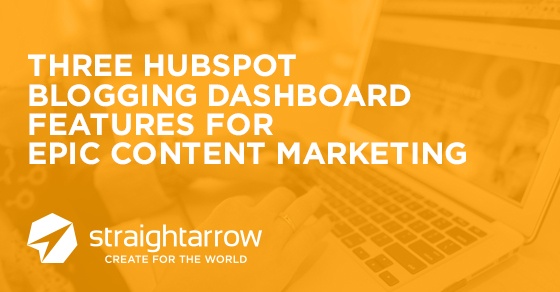5 Tips to Create Stories that Matter for Your Business

"Books are the quietest and most constant of friends; they a re the most accessible and wisest of counselors, and the most patient of teachers.”
– Charles W. Eliot
In our 3rd HUG gathering last September 2020, Belle de Jour Power Planner Founder Darlyn Ty-Nilo remarked that creating content for their target audience has been akin to creating a virtual safe space. She shared that while her planners used to be yearly sources of encouragement for her customers, the ongoing pandemic left Belle de Jour customers looking at their cancelled plans in dismay.
When she realized the growing negative sentiment toward the planners, Dar decided to pivot the conversation and provide her customers with a way to connect via virtual online meet-ups. These meet-ups initially served as a space to ask and listen to how BDJ Bellas were feeling and faring. These weekly virtual online meet-ups with the group’s members also ran various activities focused on arts and crafts. Dar shared that the team at Belle De Jour wanted to encourage their customers and help them get through the year by sharing small survival tips, as well as running motivational campaigns.
Content, in whatever form, can be a powerful tool that connects brands with their target market. Though brands focus on digital content today, Charles W. Elliot’s sentiment on the written word also applies to various forms of digital media. Our senior Digital Marketer and Content Specialist Noey Pico weigh in on how your brand can create content that resonates with your target audience.
Setting Your Brand’s Vision
Before talking about the “how”, brands need to understand their “why”. During Noey’s activity session, she invited participants to spend 15 minutes creating a mission statement for their business. This mission statement would serve as the overarching guide for a brand as they develop content to build authority around. Here’s the template shared during the session:
“We market/sell ____, but when it comes to our content strategy it’s not about marketing/selling ____, it’s about the idea that everyone should know how to _______________.”
Once participants filled in the blanks, they then created four subtopics under this statement. Through this activity, participants learned what their brand is all about and what differentiates it from the rest.
Here’s a short clip of what happened during the webinar:
Relating this to a Fireside question posed to Kris de Guzman, Founder of Your Brand Story, one attendee asked:
- What differences did she encounter when writing for her personal blog versus writing for her eCommerce business, GoodFood.ph?
Kris has an extensive background as a former brand marketer for enterprise and FMCG companies like Nestlé, Reckitt Benckiser, and Johnson & Johnson. Having this experience, she shared that catering to different audiences meant creating different content marketing strategies.
Kris began blogging about her motherhood journey last 2010 with blogs centered around how she raised her children and how she kept her life organized. Her content covered different areas of her home life, which attracted other mothers who were and are going through similar experiences.
On the other hand, GoodFood.ph launched this 2020 with products catered to families raising young children while trying to maintain a healthy lifestyle, Kris’ priority was to convert site visitors to customers by highlighting the health benefits of their products. Through these efforts, website sales grew, and even at the height of the pandemic, Kris recounted to HUG attendees that she delivered powdered milk and coffee products to their customers when their couriers weren’t available.
Understanding the identity and objectives of the audiences for both her personal blog and her eCommerce site, Kris was able to curate content that was appropriate for each audience.
Getting to Know Your Market
Once you understand the “why” of your brand, learn about the “who”.
According to Buffer, 78% of people share things online to stay connected with other people.
By starting conversations about something you care about, you are more likely to find others who care, too.
One HUG attendee spoke up during our Fireside Q&A to ask for advice on what kind of content she should publish for her travel business given that they’re currently rebranding. To offer some inspiration, Dar talked about Belle de Jour’s 2021 planner and their #YouGotThis campaign.
NAVI: Your Life Navigator is BDJ’s travel-inspired planner geared towards empowering other women to make big and brave dreams for 2021. Taking inspiration from Airbnb’s virtual experiences, NAVI features 12 different lighthouses in their planner, tells the structures’ stories, and invites users to journal. Even though air travel is scarce and discouraged, Belle de Jour is still out to cultivate the spirit of adventure within its brand.
After sharing this short anecdote, Dar brought the question back to the attendee to ask:
How can we create content that resonates with readers while also sharing the core message of the business?
Understanding the Intent Behind Searches
Outside of leveraging social media communities and running surveys, Noey also recommends search listening to hit the right keywords people are looking for. In a webinar, last April, Coverage Book Director Stella Bayles said that people live their real lives on their Google Search Bars. Every day, Google receives 3.5 billion queries such as “best-powdered milk products” or “family activities during quarantine”.
Thanks to their Hummingbird and RankBrain update, Google’s algorithm now understands the semantics and synonyms for consumer questions. As search engines continue to grow more and more sophisticated, brands can leverage search so that they are discovered by their ideal audience.
That said, while it’s important to leverage Google’s algorithms for your content strategy, it’s important to remember that your customers are the key facet to creating successful content in today’s online environment.
Noey recommends five tools to help small to medium businesses to large enterprises learn what their target audiences are looking for:
- Google Trends: This free tool from Google shows how people’s interest can increase or decrease over time.
- Google Keyword Planner: This paid tool (again from Google) shows the specific search volume per keyword.
- Answer The Public: Summarizes different questions or phrases related to the keyword you typed in. This tool has a free version, with a more robust paid equivalent that businesses can opt for.
- Ubersuggest: Neil Patel’s freemium tool provides keyword suggestions that your competitors rank for, allowing businesses to optimize their websites accordingly and encourage more organic traffic.
- Keywords Everywhere: This premium browser extension uses paid credits to show keyword search volume and the cost-per-click for different websites. Businesses now have more time to learn which keywords they can rank for.
Most people tend to forget that creating content is not just for the benefit of search engines. After all, search engines aren’t the ones filling out the forms on your website or sharing your content on social media. Search engines aren’t your customers; humans are.
By combining both efforts, you can meet the criteria for both the searcher and the search engine.
Creating Topic Clusters
Now that you know what your message is and what your visitors want to read, you can create topic clusters so that you can cover a specific topic in depth--this is where HubSpot comes in.
Search engines have shifted their algorithms to cater to our customers, so we need to shift our SEO and Content Marketing strategies to do the same. In order for your brand to be known as a credible and authoritative source on a topic (e.g. digital marketing, power planners, HubSpot tools), create a “cluster” of content that links back to a single pillar page.
Topic clusters organize your site’s content pages with cleaner site architecture. This not only benefits site visitors so they can find and access the content they are looking for, but search engine spiders can also crawl your site quicker.
And because your different subtopics link back to long-form content that exhausts information on your chosen overarching topic, search engines will take this as a sign of your authority and may rank it higher on search engine result pages.
Through continuous improvement and regular updating, your blogs are more likely to stay evergreen and your team is less likely to create content waste. Each piece of content now supports the other, forming a stable foundation for your brand’s credibility.
Telling the Right Story
“And so we would gather as tribes at the end of our workday. We would take the wide world of stimuli from our time hunting and gathering and building. And we would package it all into stories—the stories that helped us remember and care.”
- Joe Lazauskas and Shane Snow
What kind of story would you like to tell? And how do these stories support your company’s vision and build up your thought leadership?
It’s important to know the best practices and industry trends. For attendees looking to learn more about content marketing, Noey recommended taking the Content Marketing certifications under HubSpot or exploring content courses via Coursera.
And even if you don’t have a full-time content writer on board, you can also leverage other tools that enhance your content’s quality while you collaborate with your community:
- Loom: During the Demo session, Noey used this to teach HUG participants how to create content clusters on HubSpot
- Zoom recordings: We recorded the HUG event while we were live on Zoom.
- Otter.ai: We can easily upload transcripts or subtitles for interviews - with your best customers, with your operations team or with thought leaders - or recordings of virtual or in-person events through this tool.
- HubSpot Forms, Google Forms or Survey Monkey: These tools help us run customer surveys and get to know our audience better and get stories from them that form the heart of our content.
Once you have your technique, focus on what your brand genuinely cares about. Do you want to empower women through journaling? Or deliver healthy products to small families?
Once you know what you want to talk about, open that conversation with your listeners. Create content from what you discover.
We love stories. Create the right stories with the right keywords to attract the right people to your website.
Interested to learn more about HubSpot?
We can help. Join the Manila HubSpot User Group or click the button below to schedule a consultation with us today.
Hit your conversion goals with StraightArrow








Comments